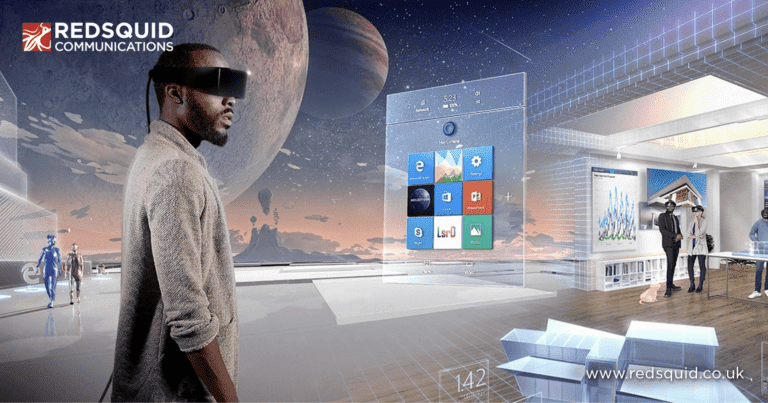The future of Business Virtual Reality and Augmented Reality
Virtual reality and augmented reality may seem intended for eccentric tech enthusiasts with money to throw around. But VR and AR actually have the potential to benefit a wide variety of industries. In this article, we’ll explain why we think VR and AR really do have a future in the workplace.

If you haven’t yet heard of it, virtual reality is a technology designed to immerse the user in a digitally created world. By blocking out all other sights and sounds, VR can almost totally immerse you within realistic virtual environments.
Alternatively, augmented reality is when virtual images are projected into the real world; making it possible to see a digital overlay as well as what is in front of you. We’ve seen a recent boom in interested towards AR thanks to popular mobile app: Pokemon Go.
A number of different VR and AR headsets are now commercially available. Huge companies such as Facebook, Samsung, Microsoft, and Google have already invested billions into creating headsets of their own; in fact, the VR and AR market are projected to approach $14 billion this year.
As of now, there are two main types of VR headsets; there are casings designed to use your mobile as a display (such as Google Glass or Samsung Gear VR), and headsets with VR displays built into them. Both Facebook’s Oculus Rift and HTC’s Vive have headsets with built-in screens.
There are also headsets designed for augmented reality, that similarly use either mobile or specially designed technology. Currently leading the AR market are Google’s recently re-released Google Glass, and Microsoft’s; Hololens.
With VR, employees could easily immerse themselves into a virtually created office environment. This means that staff members who aren’t able to get into the office, or who choose to work remotely, could still be able to experience the collective atmosphere and productivity boost provided by a good working environment.
Virtual reality has the potential to cut down traveling time and costs considerably, as not only could it accommodate staff who work remotely, but it could also enable employees to hold meetings without needing to be in the same room.
Obviously, this has already been made possible with conference calling; but despite being able to send both sound and video data, speaking to someone over Skype cannot replicate the experience of talking in person. VR is a considerable step closer to imitating the feeling of meeting someone in the flesh.
This same principle can be applied to other situations; such as interviewing candidates for job roles or visiting potential customers.
With VR and AR, your businesses could have the ability to show off detailed 3D images and environments. Imagine being able to examine and test realistic 3D prototypes of your newest products before they’re even put into production, or offering customers the opportunity to view that in 3D before buying.
VR and AR could even allow customers to experience these products and services from the comfort of their own home. For example, Andreas Johansson of real-estate company Berkovitz Development Group use AR to enable international customers to view properties without having to waste time and money travelling: “For a company like ours that sells properties thousands of miles away, it means we no longer have to wait for customers to travel to visit the site.”.
Additionally, having access to immersive 3D environments means that marketing campaigns could become even more creative. For example, Oneplus have already demonstrated the potential of VR marketing with the reveal of their new handset, when they gave fans the opportunity to experience an exclusive event via VR.
VR and AR could also transform the way that staff training is implemented. Instead of having to devote entire days to putting them through training, employees could master equipment or techniques from anywhere. The process of getting staff comfortable with dangerous equipment or environments becomes much safer as well: with far fewer consequences if things ever do go wrong.
Several companies are already implementing AR in this way. For example, aircraft engineering business GE Aviation are using Google Smart Glasses to enable their employees to gain quick access to interactive manuals and data via their digital overlay, thereby improving their ability to assemble engine parts.
Similarly, vehicle manufacturers AGCO successfully increased their productivity levels by 30% after introducing Google Glass to their employees.
Both VR and AR have the potential to change the way we work for good; allowing for more freedom, greater efficiency, increased productivity, and new creative ways of selling our products and services. For more articles covering exciting technology, having read about vehicle tracking and chatbots.
Want to share it with your friends?
